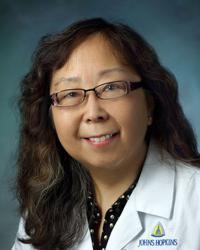Loading Complete

Kay Li, MD, PhD
Anatomic Pathology
31 Insurances Accepted
View allAbout
Primary Academic Title
Background
Additional Academic Titles
Contact for Research Inquiries
Research Interests
Research Summary
Google Scholar
Selected Publications
Locations
- Johns Hopkins Bayview Medical Center
- 4940 Eastern Avenue, Pathology 1st Floor Room AA154, Baltimore, MD 21224
- phone: 410-550-0671
- fax: 410-550-0671
Expertise
Education
University Hospitals Case Medical Center
Fellowship, Pathology, 2006University of Michigan Health System
Fellowship, Cytopathology, 2005Albany Medical Center
Residency, Pathology, 2004Cleveland State University
Graduate School, Biology, PhD, 1996Tianjin Medical University
Fellowship, Internal Medicine, 1988Tianjin Medical University
Residency, Internal Medicine, 1987Tianjin Medical University
Medical Education, MD, 1983Board Certifications
Cytopathology
American Board of Pathology, 2007Insurance
Johns Hopkins providers participate in many commercial health insurance plans. To confirm coverage of your specific physician or provider, please contact your insurer directly. For more details, please review our Insurance Information.
Search plans
- Aetna
- Amerigroup District of Columbia
- AmeriHealth Caritas District of Columbia
- Beech Street
- Blue Cross Blue Shield Federal Employee Program (FEP)
- CareFirst
- Cigna
- Evernorth Behavioral Health
- First Health
- Geisinger Health Plan
- HealthSmart/Accel
- Humana
- JAI Medical Systems
- Johns Hopkins Health Plans
- Kaiser Permanente
- KeyCare
- Maryland Physicians Care
- Medicaid Maryland
- Medicare Maryland
- MedStar Family Choice District of Columbia
- MultiPlan
- Pennsylvania's Preferred Health Networks (PPHN)
- Point Comfort Underwriters
- Private Healthcare Systems (PHCS)
- Provider Partners Advantage HMO SNP Medicare Advantage
- South Central Preferred (SCP)
- Superior Vision
- TRICARE (Humana Military East)
- UnitedHealthcare
- Veteran Affairs Community Care Network (Optum-VACCN)
- Wellpoint (Amerigroup MD)
